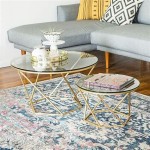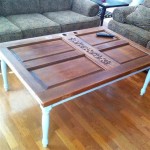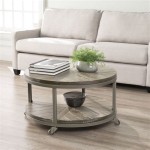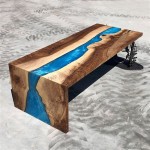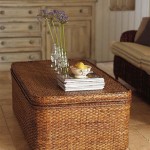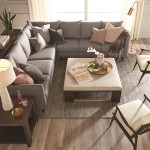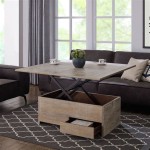Types of Tables for Restaurants
Selecting the appropriate tables is a crucial aspect of restaurant design and functionality. The choice of tables influences not only the aesthetic appeal but also the operational efficiency and customer experience. Different types of tables cater to various dining styles, space constraints, and overall restaurant concepts. Understanding the characteristics of each table type enables restaurant owners and managers to make informed decisions that optimize their layout and accommodate diverse customer needs.
The material of the tables is another significant consideration. Materials such as wood, metal, laminate, and stone each offer distinct advantages in terms of durability, aesthetics, and cost. Furthermore, the table's shape and size directly impact seating capacity and the flow of traffic within the restaurant. This article will explore the common types of restaurant tables, their specific features, and the factors to consider when choosing the right tables for a particular establishment.
Standard Dining Tables
Standard dining tables represent the most common type of table found in restaurants. These tables are typically designed to accommodate between two and four diners. The dimensions of a standard dining table generally range from 30 to 36 inches in width and length. The height typically falls between 28 and 30 inches, providing comfortable seating for most adults. These tables are available in various shapes, including square, rectangular, round, and oval.
The versatility of standard dining tables makes them suitable for a wide range of restaurant settings, from casual diners to upscale establishments. They can be easily arranged to accommodate larger groups by pushing multiple tables together. The straightforward design of standard dining tables allows them to blend seamlessly with different decor styles. The choice of materials for standard dining tables is equally diverse, encompassing wood, metal, laminate, and various composite materials. Wooden tables often convey a sense of warmth and tradition, while metal tables offer a more contemporary and industrial aesthetic. Laminate tables provide a cost-effective and durable option, and are available in a wide range of colors and patterns.
When selecting standard dining tables, it is important to consider the overall layout of the restaurant. Sufficient space should be allocated between tables to allow for comfortable movement of both customers and staff. The size and shape of the tables should be proportional to the size of the dining area to avoid overcrowding or a sparse appearance. The durability of the chosen material is also a critical factor, particularly in high-traffic areas where tables are subject to frequent use and potential spills.
Bistro Tables
Bistro tables are smaller, typically round tables that evoke a more intimate and casual dining experience. Their compact size makes them ideal for smaller restaurants, cafes, and outdoor seating areas. Bistro tables are often paired with two chairs, making them suitable for couples or small groups. The diameter of a bistro table typically ranges from 24 to 30 inches, and the height is generally similar to that of standard dining tables, around 28 to 30 inches.
The charm of bistro tables lies in their simplicity and versatility. They can be easily moved and rearranged to accommodate changing seating needs. The round shape promotes conversation and creates a more relaxed atmosphere. Bistro tables are frequently constructed from materials such as wrought iron, wood, or a combination of both. Wrought iron bistro tables often feature intricate designs and add a touch of European flair to the setting. Wooden bistro tables offer a more rustic and traditional aesthetic. In outdoor settings, weather-resistant materials such as aluminum or treated wood are commonly used.
When incorporating bistro tables into a restaurant design, it is important to consider the overall ambiance. Bistro tables are well-suited for creating a cozy and intimate atmosphere. They can be used to define specific seating areas or to complement other types of tables in the restaurant. The choice of chairs to pair with bistro tables is also crucial. Lightweight and comfortable chairs that are easy to move enhance the functionality and appeal of the bistro seating arrangement.
Banquet Tables
Banquet tables are large, rectangular tables designed to accommodate larger groups of diners. These tables are commonly used for special events, gatherings, and restaurants that cater to large parties. Banquet tables typically range in length from 6 to 8 feet and in width from 30 to 36 inches. They can seat between six and ten diners, depending on the specific dimensions. The height of banquet tables is usually the same as that of standard dining tables, around 28 to 30 inches.
The primary advantage of banquet tables is their ability to comfortably seat a large number of people. This makes them ideal for accommodating families, corporate events, and other group gatherings. Banquet tables are often made from durable materials such as plywood or particleboard with a laminate or veneer finish. The legs are typically foldable, allowing for easy storage and transportation. This is particularly important for restaurants that need to set up and break down banquet tables frequently.
When using banquet tables, it is important to consider the spacing between tables to ensure comfortable seating and movement for diners. Adequate space should be provided for servers to access the tables and for guests to move around freely. The choice of linens and centerpieces can enhance the aesthetic appeal of banquet tables and create a more formal and elegant setting. Furthermore, the lighting in the banquet area should be carefully considered to create a welcoming and comfortable atmosphere.
Booth Seating
Booth seating offers a unique and comfortable dining experience. Booths typically consist of two upholstered benches facing each other, separated by a table. Booth seating is often preferred for its privacy and comfort, creating a more intimate dining experience. Booths can accommodate two to four diners, depending on the size of the benches and the table.
The advantages of booth seating include increased privacy, comfortable seating, and space efficiency. Booths can be arranged along walls to maximize seating capacity and create a defined dining area. The upholstered benches provide a more comfortable seating option compared to traditional chairs. Booth seating is particularly popular in diners, cafes, and family-style restaurants.
When designing booth seating, it is important to consider the dimensions of the booths and the table to ensure comfortable seating for diners of all sizes. The upholstery should be durable and easy to clean. The height of the table should be appropriate for comfortable dining while seated in the booth. The lighting around the booths should be carefully considered to create a cozy and inviting atmosphere. Booth seating can be customized with different fabrics, colors, and styles to complement the overall restaurant décor.
Counter Height Tables
Counter height tables, also known as bar height tables, are taller than standard dining tables. They typically stand at a height of 34 to 36 inches, requiring the use of bar stools or counter height chairs. Counter height tables are often used in bars, pubs, and casual dining establishments. They can also be incorporated into restaurants to create a more modern and trendy atmosphere.
The advantages of counter height tables include a more casual and social dining experience, increased visibility, and space efficiency. Counter height tables encourage interaction and conversation among diners. The elevated seating position provides a better view of the surroundings. Counter height tables can be used in smaller spaces to create a more open and airy feel. They are also easier for some individuals to get in and out of, compared to lower tables.
When incorporating counter height tables into a restaurant design, it is important to choose comfortable and durable bar stools or counter height chairs. The chairs should be the appropriate height for comfortable dining at the counter height table. The base of the table should be stable and sturdy to prevent tipping. The lighting around the counter height tables should be carefully considered to create a welcoming and inviting atmosphere. Counter height tables can be made from a variety of materials, including wood, metal, and laminate, to complement the overall restaurant décor.
Outdoor Tables
Outdoor tables are specifically designed to withstand the elements and provide a comfortable dining experience in outdoor settings. These tables are typically made from weather-resistant materials such as aluminum, wrought iron, teak, or recycled plastic. Outdoor tables are available in various shapes and sizes, including round, square, rectangular, and oval.
The advantages of outdoor tables include the ability to expand seating capacity, create a more inviting atmosphere, and attract customers who prefer to dine outdoors. Outdoor seating can significantly increase the revenue potential of a restaurant, particularly during warmer months. Outdoor tables allow customers to enjoy fresh air and natural light while dining. Well-designed outdoor seating areas can enhance the overall aesthetic appeal of the restaurant.
When selecting outdoor tables, it is important to consider the climate and weather conditions in the area. Materials that are resistant to rust, fading, and water damage are essential. The tables should be stable and sturdy to withstand wind. Umbrellas or other shade structures can be used to provide protection from the sun. Comfortable seating, such as chairs with cushions, can enhance the outdoor dining experience. The outdoor seating area should be kept clean and well-maintained to ensure a positive customer experience.
Adjustable Height Tables
Adjustable height tables offer versatility and adaptability to various dining needs. These tables feature mechanisms that allow the height to be adjusted, making them suitable for both standard dining and counter height seating. Adjustable height tables are becoming increasingly popular in modern restaurants and co-working spaces.
The advantages of adjustable height tables include flexibility, inclusivity, and space efficiency. These tables can be easily adjusted to accommodate diners of different heights and preferences. They provide a more accessible dining option for individuals with mobility issues. Adjustable height tables can be used for a variety of purposes, from dining to working. They can also be adjusted to create standing workstations, promoting movement and reducing sedentary behavior.
When selecting adjustable height tables, it is important to choose a table with a smooth and reliable adjustment mechanism. The table should be stable and sturdy at all height settings. The adjustment range should be sufficient to accommodate both standard dining and counter height seating. The table should be made from durable materials that can withstand frequent use. The design of the table should be versatile and complement the overall restaurant décor. Adjustable height tables can be a valuable addition to any restaurant that values flexibility and inclusivity.

The Complete Guide To Dining Tables Types And Styles Cabinfield Blog

Restaurant Tables Cost Guide World Coppersmith

The Complete Guide To Dining Tables Types And Styles Cabinfield Blog

The Complete Guide To Dining Tables Types And Styles Cabinfield Blog

Restaurant Table Sizes Dimensions Seating Capacity Guide

Restaurant Tables Guide Materials Durability Aesthetics

10 Types Of Wood Tables For Each Restaurant Style Furniture Plus

Commercial Restaurant Tables Webstaurant

Restaurant Seating Booth Design Guide Webstaurant

10 Popular Restaurant Table Designs In
Related Posts

